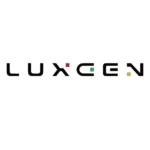Shinhan Financial Group reported a significant 15.1% increase in net profit for the second quarter, reaching 1.4255 trillion won (approximately $1.055 billion). This growth was fueled by balanced increases in both interest and non-interest income, despite a challenging economic climate.
Interest income for the quarter stood at 2.8218 trillion won, a modest 0.2% rise from the previous quarter. Over the first half of the year, interest income totaled 5.6377 trillion won, up 7% year-on-year. Non-interest income for the second quarter reached 1.1121 trillion won, marking a 10.9% increase from the previous quarter and contributing to a first-half total of 2.1146 trillion won, a 4% increase from the same period last year.
Global profit for the quarter decreased by 8.9% to 195.8 billion won. However, first-half global profit surged 32.4% to 410.8 billion won, driven by strong performances from Shinhan Vietnam Bank and SBJ Bank, which reported net profits of 141.3 billion won and 71.5 billion won, respectively.
The group’s second-quarter selling and administrative expenses were 1.4716 trillion won, while provisions for bad debts sharply increased by 61.4% to 609.8 billion won. Non-operating profit for the first half recorded a loss of 258.8 billion won, primarily due to provisions related to Shinhan Bank’s Hong Kong H-Index ELS, though partially offset by a recovery in the second quarter.
At the end of June, Shinhan’s CET1 ratio was 13.05%, with a provisional BIS capital adequacy ratio of 15.76%. The board also resolved a common stock dividend of 540 won.
Shinhan’s new value-up plan aims to maintain a CET1 ratio over 13%, raise ROE to 10%, and ROTCE to 11.5% by 2027. Additionally, the plan includes reducing shares from 513 million to 450 million, increasing stock value per share from 92,642 won last year to 130,000 won by 2027, and boosting the shareholder return rate from 36% to 50%.
Despite potential real estate-related losses, Shinhan Financial Group continues to achieve high quarterly profits driven by increased interest income from corporate loans and higher non-interest income from credit card and investment banking fees.






